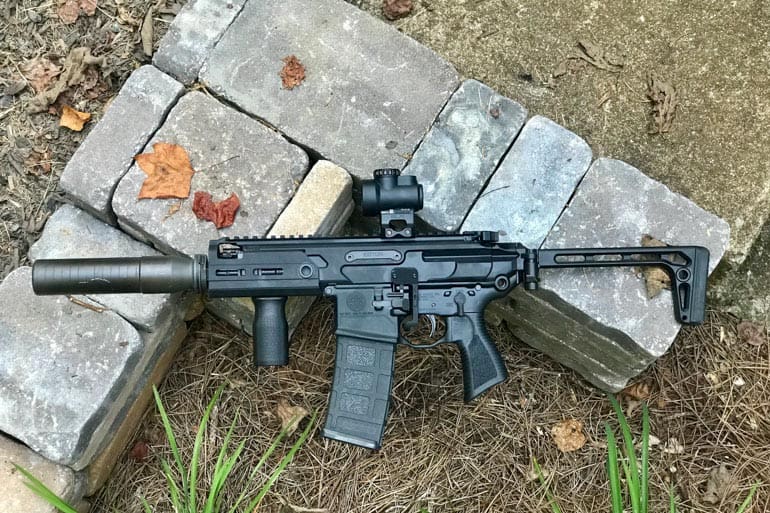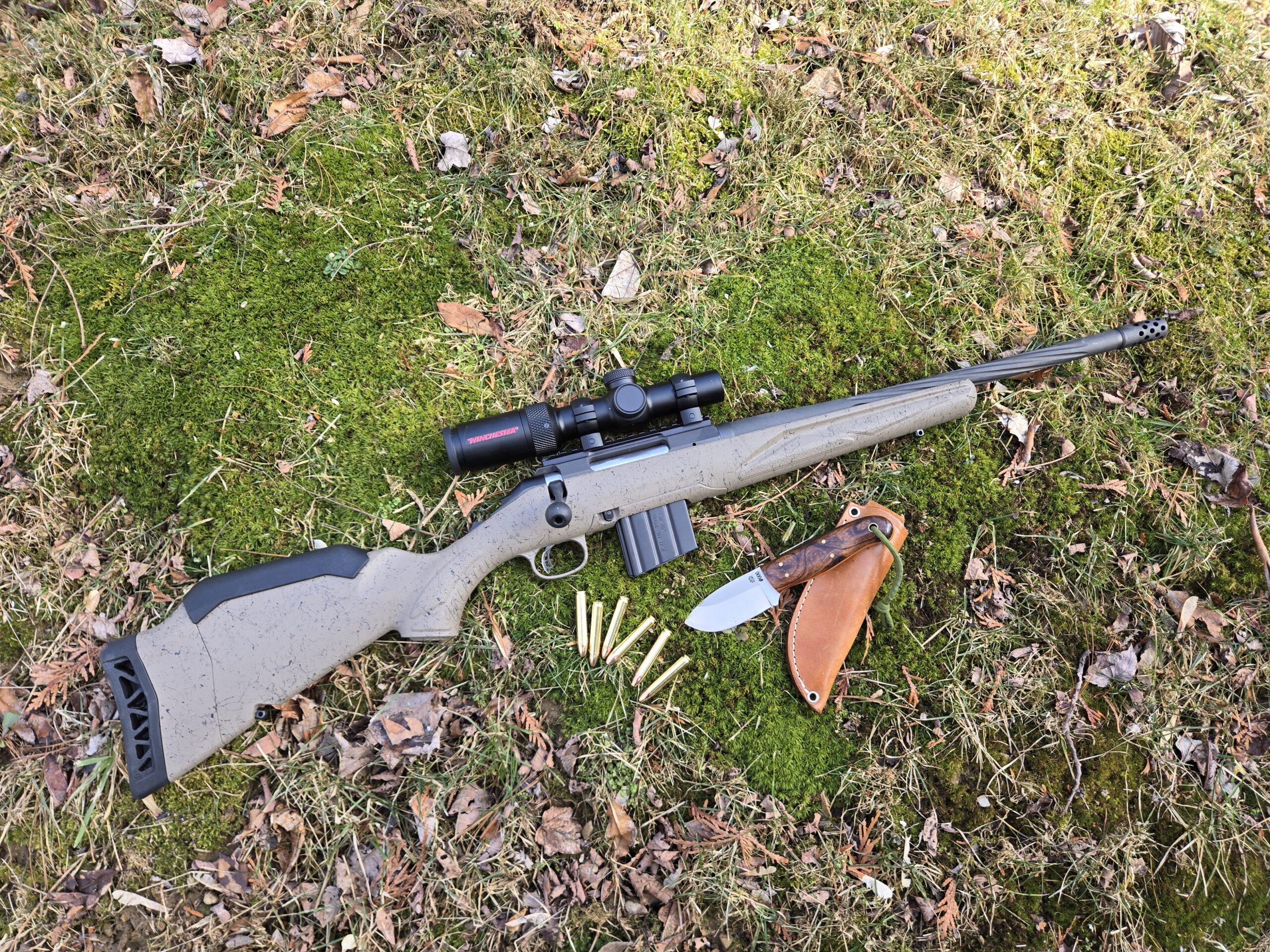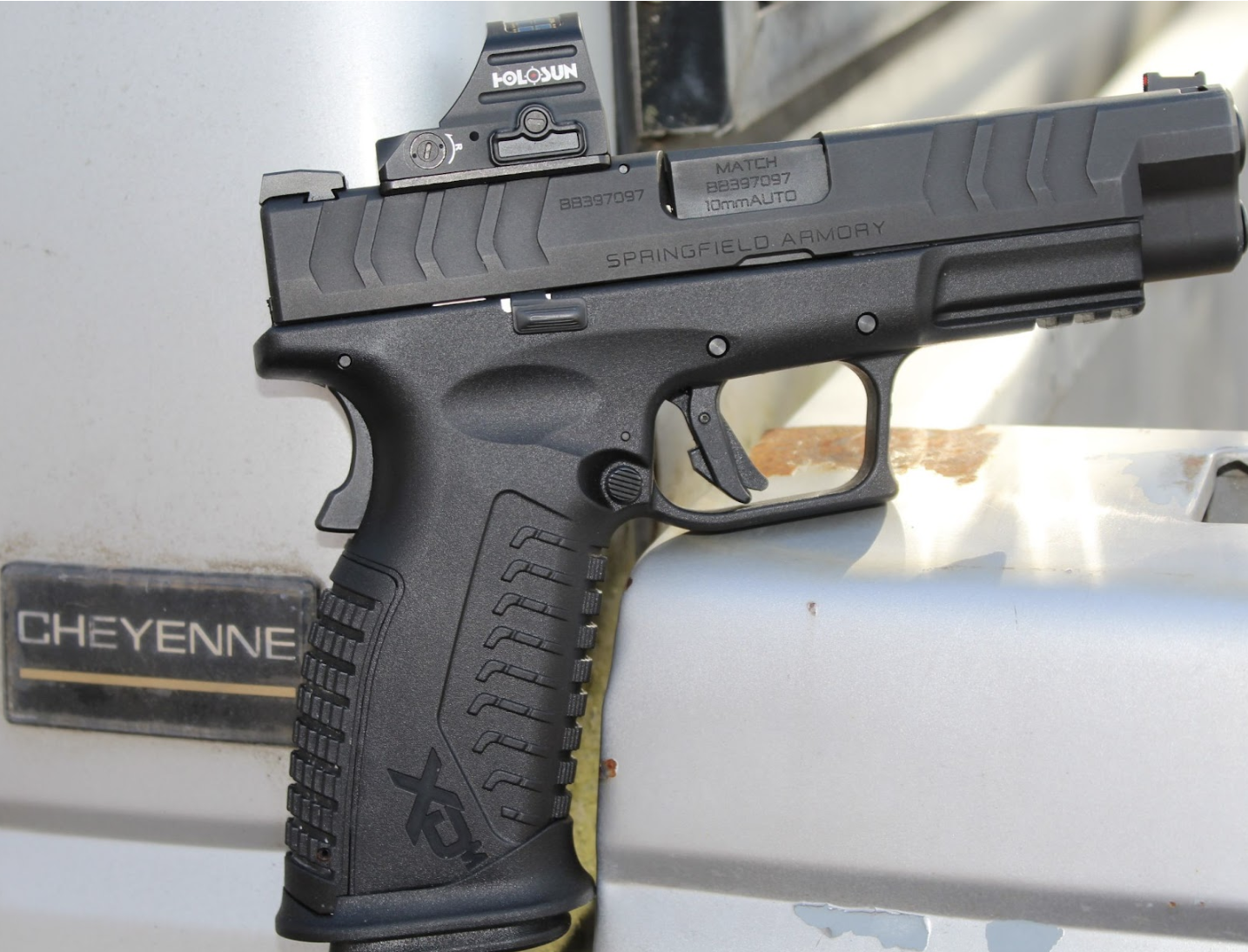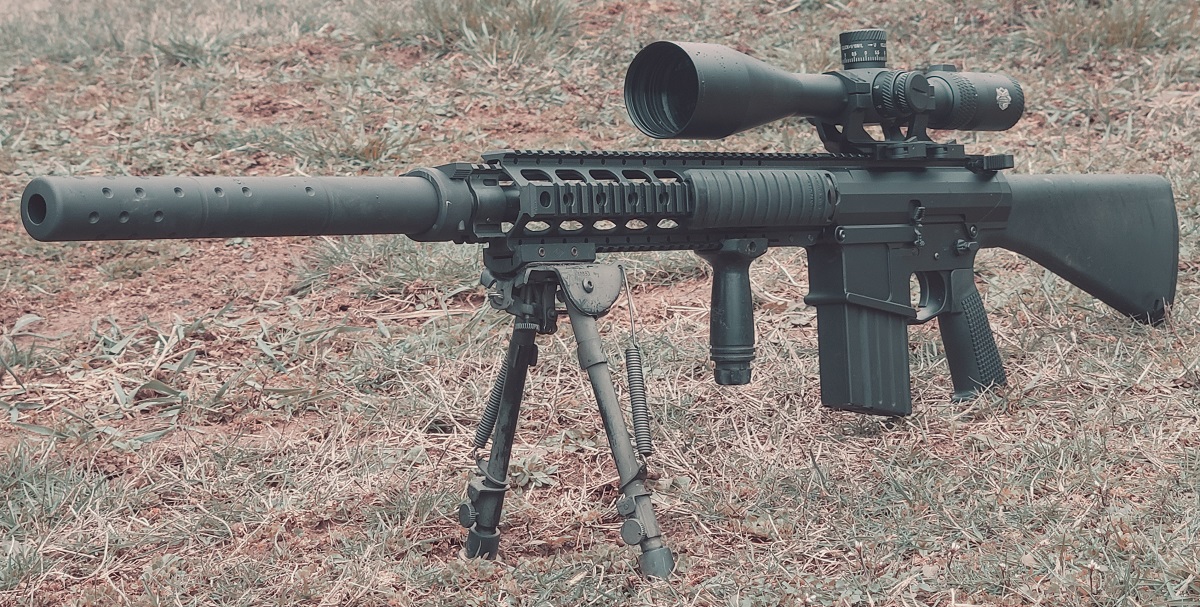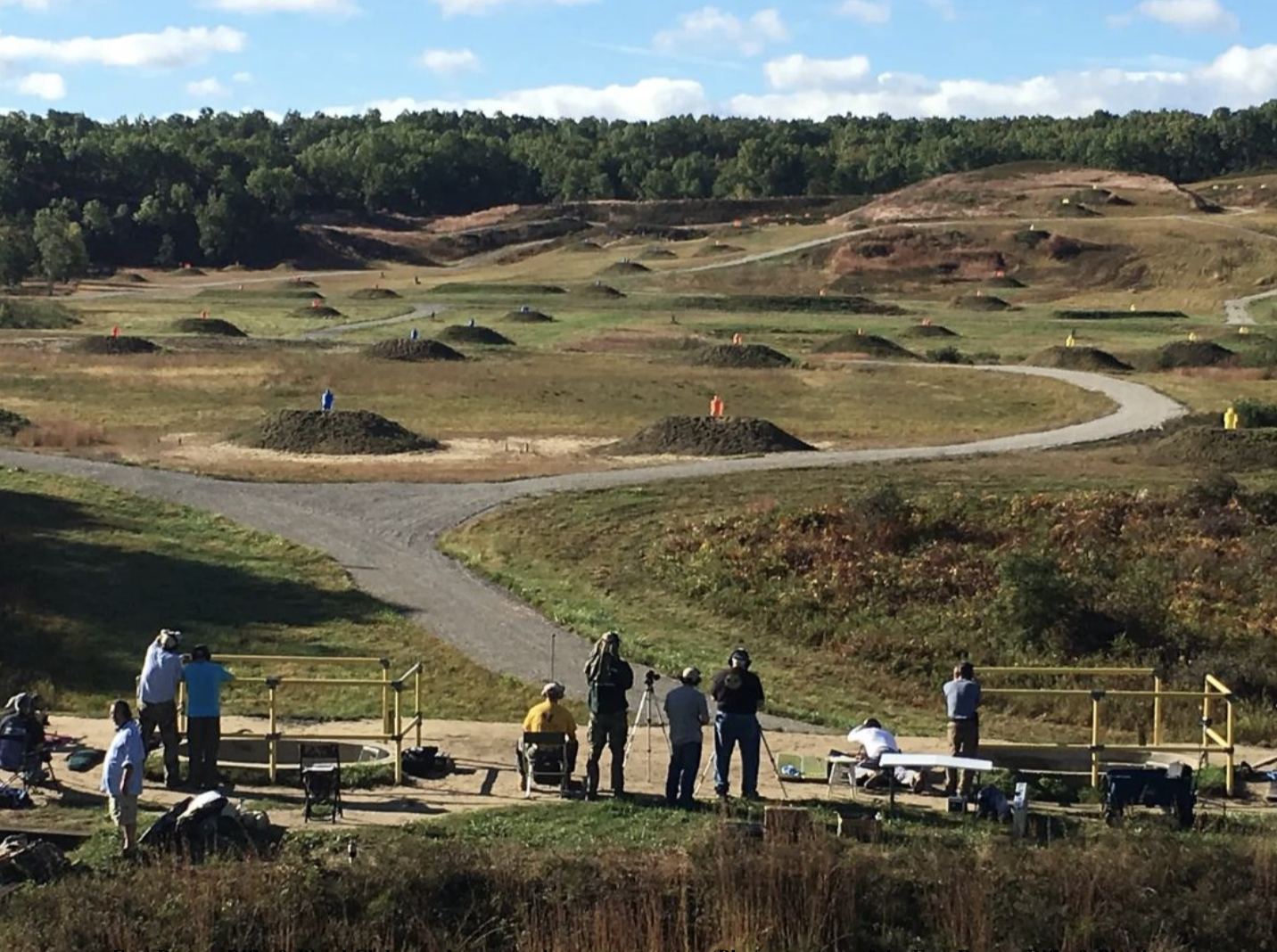By Arthur Parker
SIG Sauer can trace its history back to Switzerland in 1853, where it began its life as Swiss wagon factory. However, the name we all know and love did not come about until the 1970s.
SIG (Schweizerische Industrie Gesellschaft) acquired J.P. Sauer & Sohn, which gave birth to SIG Sauer, and a new age of modern weapons.
Fast forward to the present day, and SIG Sauer is an industry leader in firearms innovation and manufacturing. This has attracted the attention of none other than SOCOM (Special Operations Command). With seemingly every product they have introduced over the past few years getting snatched up by the US military, SIG seems to have secured itself a new partner.
They haven’t stopped at just firearms either. SIG has begun to manufacture suppressors, optics, and ammunition in recent years as well. Just last year, the US military issued SIG a contract which provides them with suppressors, optics, pistols, and rifles (including the Rattler conversion kits). SIG seeks to be a complete weapon systems solution for military’s, law enforcement, and civilian’s shooters alike.
Enough of the backstory and fanboy-ism, let’s get to the real reason your reading this; the 300 Blackout semi-automatic SIG Sauer MCX Rattler SBR. First a disclaimer: this will be a review of the aforementioned weapon system, not a discussion on the ballistic capabilities of the 300BLK cartridge. That’s a story for another post. This review will, however, recognize the undisputed fact that 300 Blackout performs well in shorter barrels.

SIG has pronounced their MCX Rattler as the most “discreet platform” ever made and with an overall length of just 23.5 inches, the Rattler SBR is nothing if not discreet. The Rattler is part of SIG’s MCX line of rifles/pistols.
Pictures don’t do the Rattler justice. You have to hold one to understand just how small this rifle really is. My previous idea of what I considered a compact weapon system to be was my beloved DD MK18. Well, that idea was completely obliterated when I compared it to the Rattler.

This is my new standard for a compact rifle. A standard that will be hard-pressed to beat, while maintaining reliability. Don’t let its short stature fool you, this thing is not as light as you would think.

The stripped-down SBR version of the Rattler weighs in at 5.7 pounds. Now, we all know stripped down versions just aren’t going to cut it, so after adding a Trijicon MRO, SIG SRD 762 QD can, a Magpul vertical grip, a Parker Mountain Machines BCD, and don’t forget a fully-loaded magazine of 220 grain subsonic rounds, we have ourselves a stout 9.4 pound setup.
Yes, you heard that right, the fully kitted out Rattler weighs only four ounces less than my 18-inch AR with a 1-8x scope, bipod, and loaded magazine.
All of that being said, the Rattler is built like a tank and being as compact as it is, it’s quite easy to maneuver. With all the weight of the Rattler closer to your body, you seemingly don’t even notice it while shooting the weapon.
The machining and attention to detail with the SIG MCX Rattler SBR is immaculate. Pair that with the consistent black nitride finish, and there’s nothing to complain about with the appearance of this firearm.

Now that we have gotten the weight and appearance out of the way, let’s work our way from stock to muzzle. The SBR version comes with an ultra-thin skeletonized aluminum side folding stock. The stock has a very rugged and sturdy feel to it and locks up solidly in both the extended and folded positions.
If you’re the type to worry about haphazardly knocking your side-folder around, you have nothing to worry about. Folding the stock requires some upward pressure which I found only happens if you want it to.
The pad on the rear of the stock does its job just fine. It’s tacky enough to stay put in your shoulder while firing, but not overly tacky to the point of snagging on everything it comes in contact with.

If you love a multitude of QD attachment options, SIG has you covered with three QD locations on the Rattler. You come across your first one on the rear of the stock, just in front of the butt pad. Moving down from the stock, we come to the Rattlers receivers and your second QD cup.
While the lower receiver is similar to that of an AR-15’s receiver, the Rattler has some substantial differences in its PDW upper receiver. If you’re not familiar with SIG’s MCX line of rifles, they don’t use a standard AR pattern buffer tube which gives you the ability to fold the stock. The recoil of the Rattler is controlled by dual buffer springs which ride in channels running along either side of the upper receiver.

The Rattler does not come equipped with a forward assist. Love it or hate it, it’s not there and being as I’ve never used one in ten years of shooting AR’s, I’m not concerned. The case deflector, staying true to the gun’s compact nature, has also been trimmed down. It functions as a normal case deflector should, but sticks out from the upper noticeably less.
The upper receiver also extends nearly the full length of the rifle, allowing it to be incredibly strong. The lower is quite similar to that of an AR-15, controls are nearly 100% ambidextrous except for the bolt release.
The safety selectors on the Rattler are quite nice, the left side selector is a standard size while the right side has a shortened switch to not interfere with your shooting finger (assuming you’re right-handed). The travel in the safety selector is smooth and consistent and the lockup at firing positions is firm and audible.
The magazine release on the right side of the receiver is textured and elongated and makes it hard to miss with an extended firing finger. The left side magazine release is similar to the size of a standard AR-15 magazine release and is equally simple to actuate with an extended left-handed firing finger.
Unlike several ambidextrous magazine releases I have tried, the Rattler’s magazine releases function equally. Both are easily depressed, and both drop the magazine freely each time.
The bolt release is the one control that you won’t find on both sides of the rifle, however, they did upgrade it in an attempt to make you forget the other side doesn’t have one. The release has the feel of your standard AR bolt release, with a substantially larger surface area.
The one main difference you will see is the leg on the lower portion of the bolt release. I like this feature as it makes it a little easier to lock the bolt to the rear. Although the Parker Mountain Machine BCD makes it a whole lot easier.
As far as controls go, SIG truly did think of everything when designing this firearm. The fitment between the lower and upper receivers is perfect. There is virtually no wobble and all the lines run together in perfect unison. The upper and lower receivers are both 7075 aluminum, which is what all manufacturers should use in my opinion.

The charging handle on the Rattler is ambidextrous and functions as you would expect, I’ll say it’s good, just not great. I can’t exactly ding the Rattler for its charging handle at it keeps with the sleek and compact language of the gun. However, I would have liked to have seen extended latches.
That’s why I opted for the Radian Raptor charging handle and it is fantastic.

Note: your standard AR-15 charging handles are not compatible with the Rattler or any other MCX platform firearm, however as these guns have increased in popularity, so has the aftermarket support for them. At the time of writing this, Geissele and Radian both make charging handles for the MCX line of rifles.
Let’s talk about the pistol grip for a moment, quite simply put, I love it. And I also hate it. I get why they chose the grip as it stays true to the overall design (small, compact, and minimalist). However — and this is a big however — if your hands are any bigger than a 13-year-old’s, this grip is going to feel like you’re holding a broomstick. If it wasn’t so aesthetically pleasing, I would probably change it out. The good news is the Rattler will take any standard AR-15 grip.

The stippling on the sides and the cuts along the front and back are perfectly placed to allow for comfort and a firm grip. The angled shape of the grip also makes sense. The front portion is longer to allow all of your fingers to fit, and the rear sits a bit higher which isn’t a big deal as you don’t really notice your palm hanging off as much as you would notice your fingers.
The middle and lower portion of the grip also has a slight palm swell in it to better fill up your hand. As much as a broomstick could, I guess.

Moving on forward we have the 4.75-inch M-LOK rail, as well as your final QD slot. The M-LOK handguard has two attachment slots at the three, six, and nine o’clock positions. Mount your trinkets wisely, though, as you don’t have very much real estate to work with.
If you just can’t make it work, SIG, as well as Midwest Industries, make varying lengths of optional handguards. The Rattler’s standard handguard is extremely sturdy and well made, and its attachment method in no way resembles an AR-15. The rail on the Rattler is about 90% open on the top and only connected at the end of the rail.

On each side of the rail, SIG left openings for you to access the gas piston adjustments (more on that later).

The upper sides of the rail have notches inside which run along the inside of the receiver.
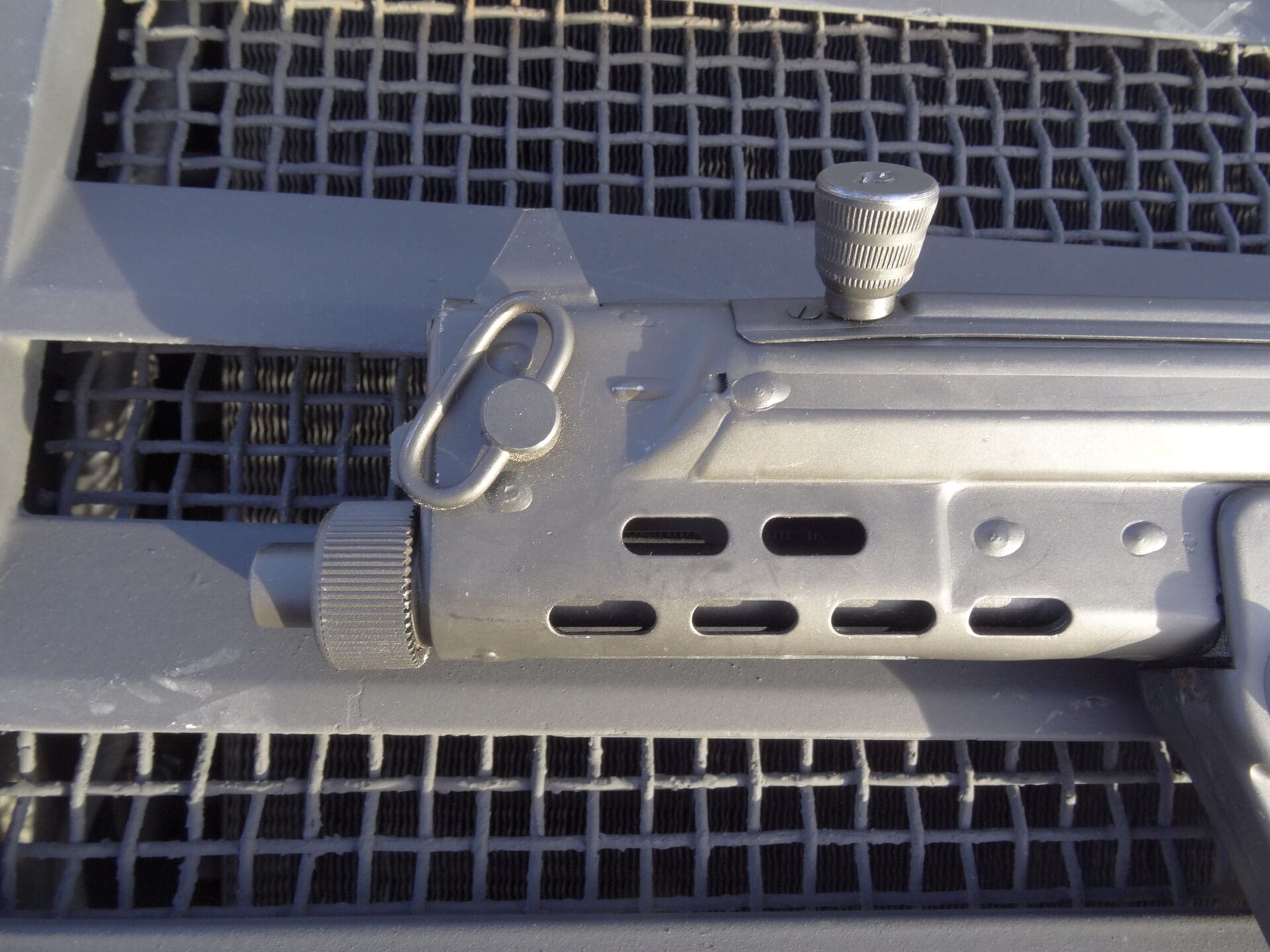
You then have two Torx screws on the bottom as well as a loop that the front takedown pin slides through. All of this together makes removing the handguard extremely easy while also making it much sturdier than a standard AR-15 handguard.
At the end of the muzzle, SIG attached a three-prong flash hider, which works surprisingly well. Although I quickly replaced it with SIG’s SRD flash hider to mate with my can.
As I hinted at earlier, the Rattler uses a two-position short-stroke gas piston design rather than an AR’s direct impingement system. The pros and cons of each are numerous and hotly debated, but the main upside people tend to praise with piston systems is that your action stays cleaner, as you don’t have debris flooding into your chamber from the gas tube.
We won’t get into which operating system is better, you can be the judge of that from your own experiences. The adjustment switch for the gas piston (at the front of the handguard in the images above) is easily accessible and I found that using a cartridge to adjust it works great.
Connected to that piston system is a 5.5-inch cold hammer-forged barrel. This carbon steel 1:5 twist barrel is nitride finished and threaded in the common 5/8×24 pitch. The profile of the barrel is extremely heavy, which should be expected with its incredibly short length.

Feeding that beast of a barrel is SIG’s proprietary bolt carrier group. The carrier itself is a solid chunk of steel, precisely machined, and evenly coated.
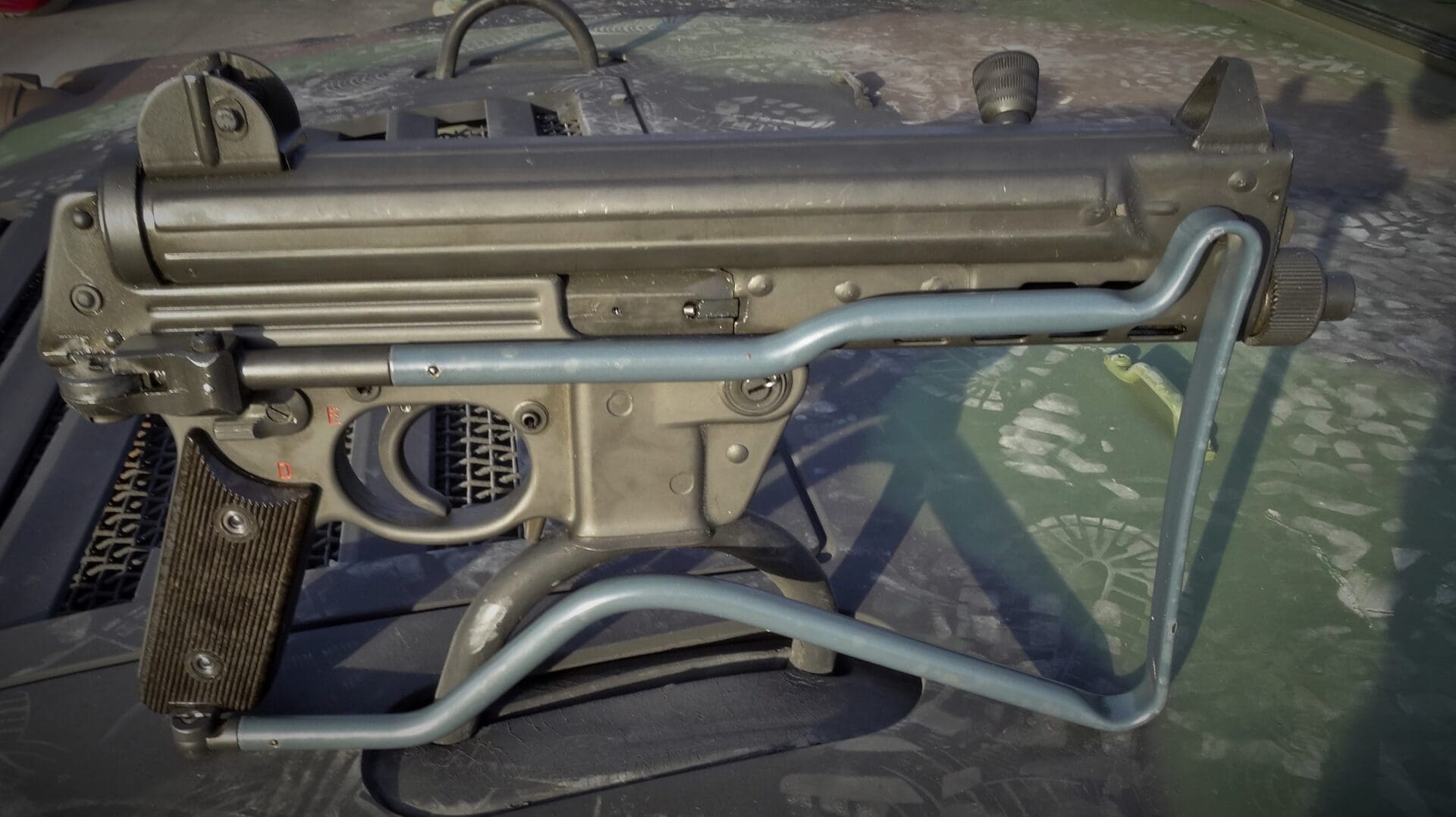
The bolt face resembles that of your standard M16/AR-15, but it’s not interchangeable.

Carrying that heavy bolt carrier around are the dual recoil springs I mentioned earlier. They attach to the top and make up one solid unit for simple disassembly.

Now, let’s talk about the Rattler’s trigger. It sucks. The MCX line’s triggers have been derided since the line was first introduced. People have complained about each new iteration of the MCX but little has been done to change it.
The Rattler trigger may be even worse than its big brother’s. It’s grittier than a South Georgia breakfast, creepier than your Uncle Lester, and heavier than the crowd at Old Country Buffet.
The Rattler’s trigger breaks at a sloppy 8.5 pounds on average. Luckily for us all, Geissele has saved the day once again with trigger made for the MCX. With an MSRP in the mid $2,000 range, it would be nice to see the Rattler come with the Geissele triggers pre-installed, but since they don’t, I would highly advise switching to one.
[Editor’s Note: SIG reached out and stated that approximately 18 months ago they switched to a much nicer, 2-stage trigger in the Rattler as the standard factory unit. They’re sending one of these to Arthur for a follow-up.]
The 300 Blackout round (and ultimately the Rattler) was born out of a need by SOCOM for a compact rifle to replace the MP5-SD and other similar pistol caliber sub guns. The 300 Blackout became a viable replacement as it uses the more potent .30 caliber projectile, with subsonic capabilities like that of the MP5-SD.
I was able to run a few rounds through a chronograph and the results were what I expected.
For those who do not know, the velocity of around is impacted by the amount of powder which is burned in the barrel behind it. The longer a bullet spends in the barrel, the more time the powder has to fully burn and launch the projectile with maximum velocity.
The reason 300 Blackout performs so well in shorter barrels is due to the heavy and slow-moving projectile. With the slower-moving bullet, it spends slightly more time in the barrel and therefore can burn more powder behind it.
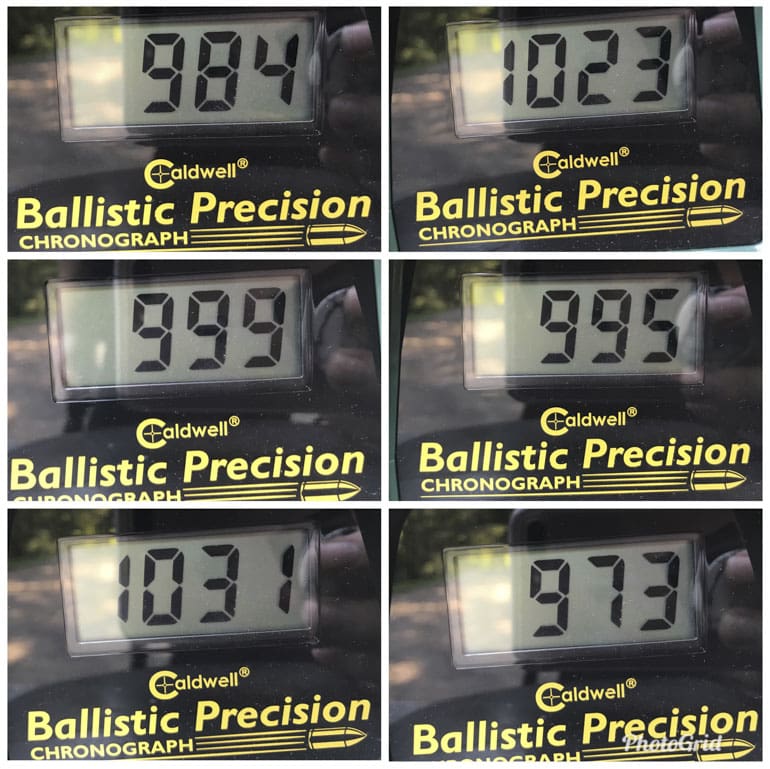
As you go down in projectile weights, the effects of a shorter barrel are more noticeable. This is seen with the chronograph results from these two rounds: Minuteman Munitions 220 grain subsonics, and 110-grain Noveske Varmaggedon rounds. We fired six rounds of each. You’re about to have a whole bunch of numbers thrown your way, I apologize. The first round tested was the 220-grain subsonics, the lowest velocity we got was 973 fps and the highest was 1031 fps. That’s a range of 58, while our average was right at 1000 fps.
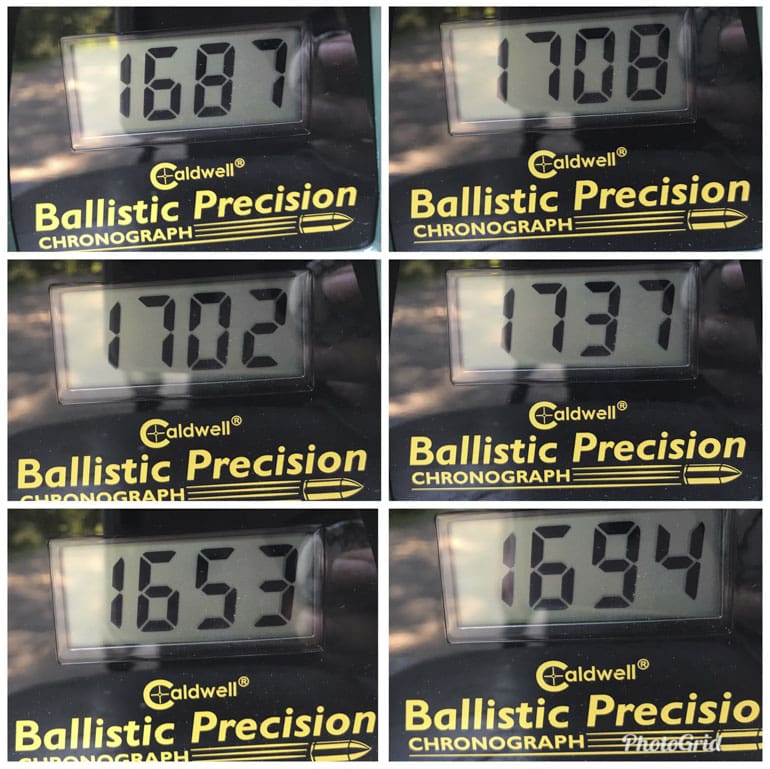
Comparing that to the manufacturer’s listed velocity of 1050 fps out of a 16-inch barrel, you can see that a shorter barrel (10.5 inches shorter) has minimal effect on the velocity. In stark contrast to that, we tested the 110-grain supersonic and came out with a high of 1737 fps and a low of 1653 fps. That’s a range of 84, while our average was 1696 fps.
Now, when you compare that to Noveske’s listed velocity of 2150 fps out of a 16-inch barrel., you can see that a shorter barrel makes a sizeable difference when shooting lighter projectiles.
Accuracy of the Rattler is pretty good. It’s nothing that will blow your mind, but for what it is, it’s more than adequate. For accuracy testing, I put on aNight Force 1-4x and rested on sandbags at 50 yards. The reason I tested at 50 yards is that this platform isn’t intended to be used further than that. Remember, this rifle was built to replace the MP5-SD, which is a CQB type gun.

With three different rounds tested, I seemed to stay around 3 MOA. The first five-shot group shown is with the Hornady 110-grain VMAX, where we were able to get right at 3 MOA.

Next, we fired the Minuteman Munitions 220 grain subs and came out with a group of 3.5 MOA.

Lastly, the Noveske 110 grain Varmaggedon gave us our best group of about 2.5 MOA. All of these groups were shot with the standard MCX trigger. With a trigger upgrade, I believe this rifle is more than capable of laying down sub 2.5 MOA groups consistently.
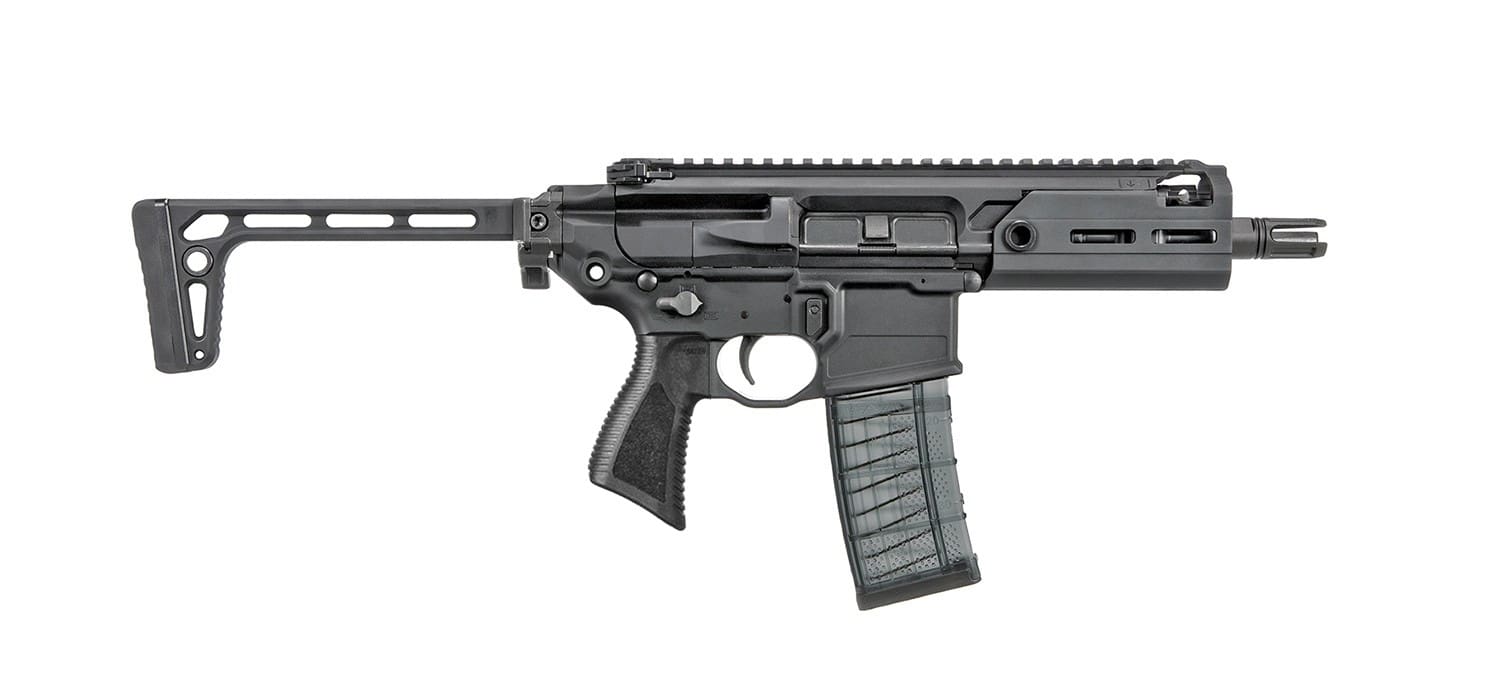
Shooting the Rattler is about as fun as shooting gets. Every time I pick it up, I smile ear to ear as I mindlessly run through hundreds of rounds. Recoil impulse with subsonics is about as mild as a 9mm carbine and is what I like to spend the majority of my time shooting.
While supers will slap you around a little bit more, it’s still easy to control. If I had to compare the recoil of supers to another rifle, it would have to be an AK. However, being a large guy, and knowing how to hold firearms properly, recoil has never really been an issue for me.
The Rattler’s adjustable gas system is a nice touch. When I first began to shoot the gun, I didn’t realize the gas position was set on the + or “more” gas setting. With my suppressor attached this gave me a face full of gas that caused my eyes to water after two rounds. I didn’t make that mistake again.
I adjusted it to the – or “less” position and had far less gas getting into my face, with no loss in reliability.
I haven’t noticed the position of the gas adjustment switch affecting reliability with the suppressor on or off. The only difference was with the amount of gas seeping out of the upper.
Overall, this is my new favorite .300 AAC Blackout platform. It does all I want it to and does it extremely well. With an upgraded trigger, the Rattler would be damn near perfect.
For those of you put off by a short barrel rifle’s NFA issues SIG also makes the MCX Rattler Canebrake pistol. And for those not sold on 300 BLK, they also make the Rattler PCB 5.56 NATO AR Pistol (PMCX-5B-TAP).
Specifications: SIG Sauer Rattler SBR
Operating System: Gas Piston
Caliber: 300Blk
Overall Length: 23.5 in
Overall Width: 2.8 in
Height: 8.0 in (203 mm)
Barrel Length: 5.5 in (140 mm)
Weight: 5.7 lbs (2.59 kg)
Twist Rate: 1:5
MSRP: $2719 (about $2300 retail)
Ratings (Out of 5 stars):
Accuracy: * * * *
The gun is plenty accurate for what it is. Show me another rifle with a 5.5-inch barrel that out-shoots the Rattler. Throw in a decent trigger and you’ll see those groups tighten up even more.
Ergonomics: * * * * ½
The gun has a great feel to it. All the familiar, ambidextrous controls. However, I have to knock off a half star for the way its fits my 6’6” 290-pound frame. I feel a little like Andy Dufresne crawling out of Shawshank when I’m behind this thing. Granted most people aren’t as big, so you may give it the full 5 stars.
Reliability: * * * * *
I fed this beast six different types of ammo, from 220 grain reloads to 85 grain factory loads without a single hiccup. Suppressed and unsuppressed, runs like a Swiss clock.
Customization: * * * * ½
With the modularity of the AR-15 rating five stars, the MCX Rattler SBR rates a little less. Swapping out different handguards and barrels is simpler on this platform than an AR-15. Simplicity isn’t the only factor for customization, though. You also have to consider the scope of products offered. The undeniable truth still remains that the aftermarket support for the AR-15’s is second to none.
Overall: * * * * ½
SIG has truly delivered with this platform, and it’s just a matter of time before it explodes in popularity as its military use increases. If it wasn’t for the trigger, this would be 5 stars easy.
All images courtesy the author unless otherwise credited.

